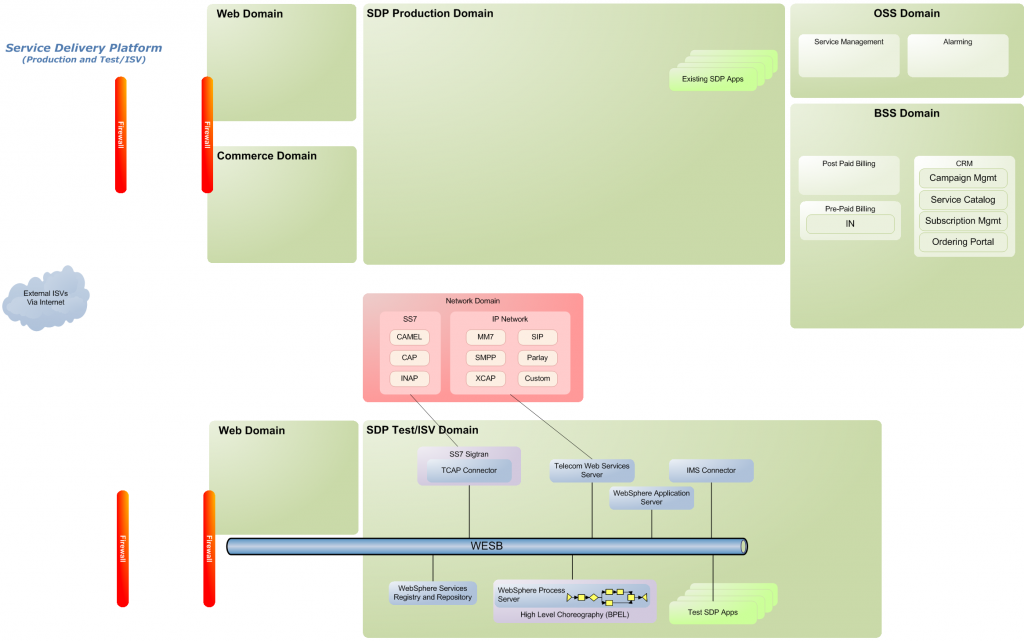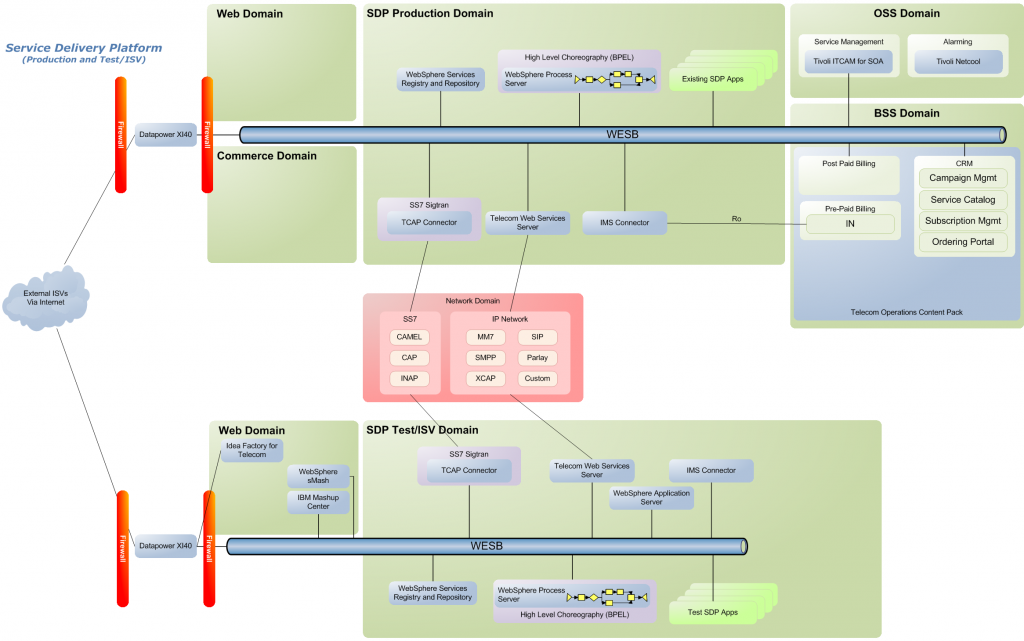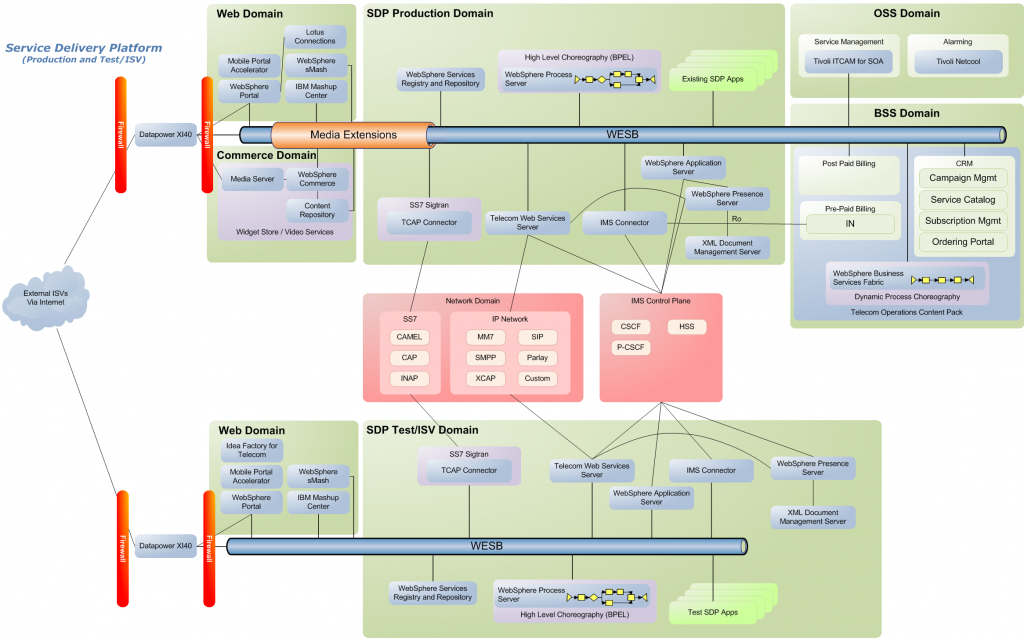Originally posted on 26Nov09 to IBM Developerworks where it got 11,308 Views
I had a request on the other week to create a number of topology diagrams that showed how a Telco might start small and grow their environment to add new capabilities and services. This was specifically for a telco in Vietnam, but I figured it would make sense to generalise the presentation and the images to make it usable for other opportunities. We’ve had a similar request from other telcos recently as well. The presentation step through 11 phases from a pilot/trial environment through to a full blown system. Each slide has speaker notes explaining what is being added at each phase in terms of products and capabilities. This presentation is not meant to make any recommendations on how to evolve form a small system to a more complex and capable one. What it is supposed to illustrate one possible evolution… Note that it focuses only on the IBM components and some other components would also be required for some phases (such as a transcoding engine in the media extension phase).
Below are three of the diagrams – Phase 1, Phase 6 and Phase 11 and the speaker notes that go along with that phase – to give you a feel for the flow…
Phase 1 – Test Environment

At this first stage, an initial deployment might be considered a proof of concept or a trial – which could become the test and or ISV environment, The functions that this could offer are:
- Composite applications that bring together functions provided by the network. For instance an application that consumes SMS messaging and integrates the location of the handset into an app.
- WSRR will get them down the path of SOA Governance – it is important to get this in early to ensure that the governance model is maintained and the Telco will now need to rework services that are created at this stage.
- Complex workflows and business processes can be built which include human tasks (such as prototype processes for the production implementation )
Phase 6 – Developer Ecosystem including Web 2.0

Phase 6 introduces the Developer Ecosystem components such as :
- Idea Factory for Telecom – which will help make a dispersed group of developers into a community. It enable the sharing of ideas and a framework for the Telco to manage the evolution of the ideas that are generated within the community. It also provides a rapid prototyping capability via…
- IBM Mashup Canter which allows users to drag widgets onto a workspace and simply wire them together. It is both the development and the runtime architecture. This means that developers don’t need deep development skills in order to build new applications.
- WebSphere sMash which provides a PHP and Groovy scripting environment (both development using the Dojo toolkit and the runtime environment)
This combined with the web services exposure deployed in phase 4 means that the developer ecosystem can now cater for all levels of developers – those with no skills can use the drag and drop mashup environment, script developers can use sMash and more advanced developers can use the web services interface. In the backup slides there is an illustration of this.
For advanced developers the Telco can support developers across a range of IDEs ranging from Rational and Eclipse (where we have Telecom Toolkits available for free) to other IDEs (such as Microsoft Visual Studio or Sun Netbeans) where the IDE has tools to assist developers with consuming web services. In all the IDEs, developers will consume the Web Services Description Language (WSDL) file from a UDDI directory in the DMZ. The UDDI directory (part of WPS) is populated from the WSRR internal services repository.
Phase 11 – IMS integration and extension

When the Telco goes down the IP Mulitmedia Subsystem (IMS) path, the software deployed already has IMS enablement, but at this point we can also add WebSphere Presence Server (PS) and WebSphere XML document Management Server (XDMS – formerly WebSphere Grouplist Manager) which provides IMS services for the IMS services plane. The core infrastructure that was deployed way back in phases 1 and 2 are critical to the IMS Services plane.
It is important to understand that the phases I have split them down into are purely arbitrary and are not necessarily what would happen in a real telco. Which function occurs at what point and in combination with other functions is something that must be driven by the business requirements of the telco. The intent is to illustrate how a telco could start small and add function incrementally building on the previous investments.

One Reply to “Telco System Evolution”